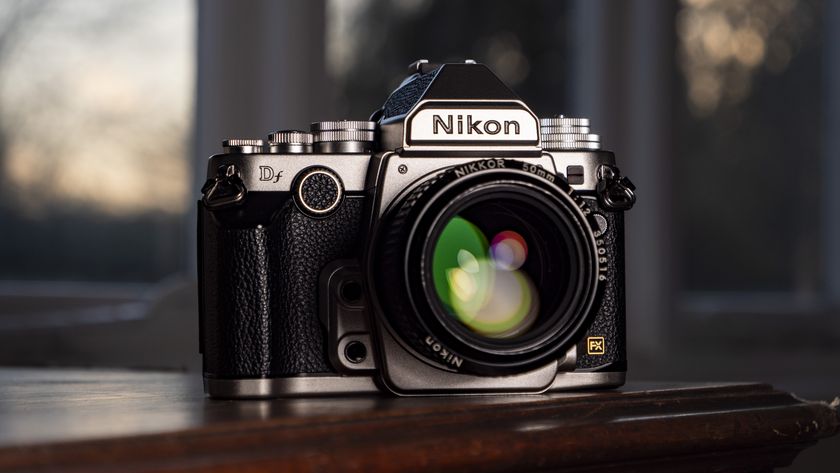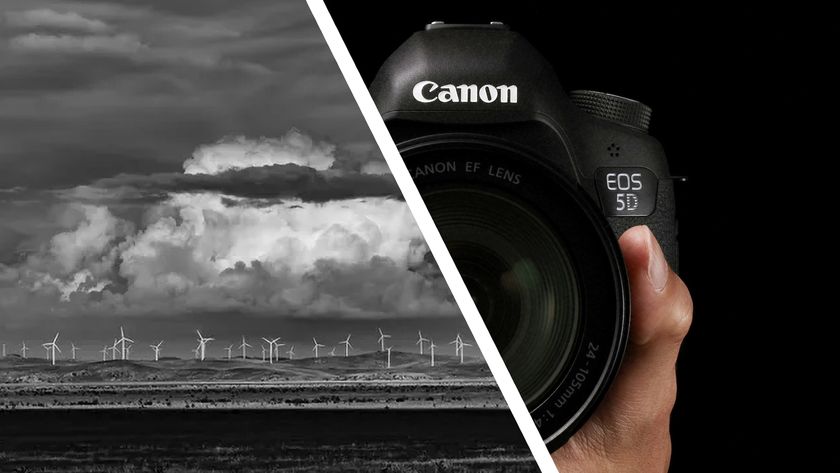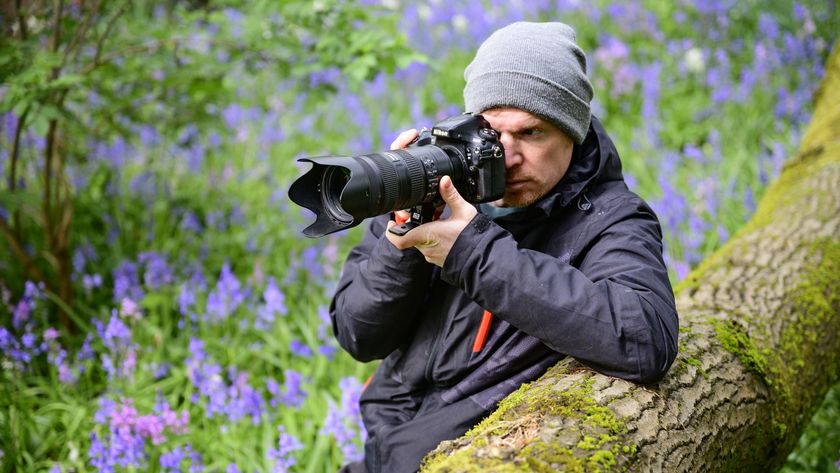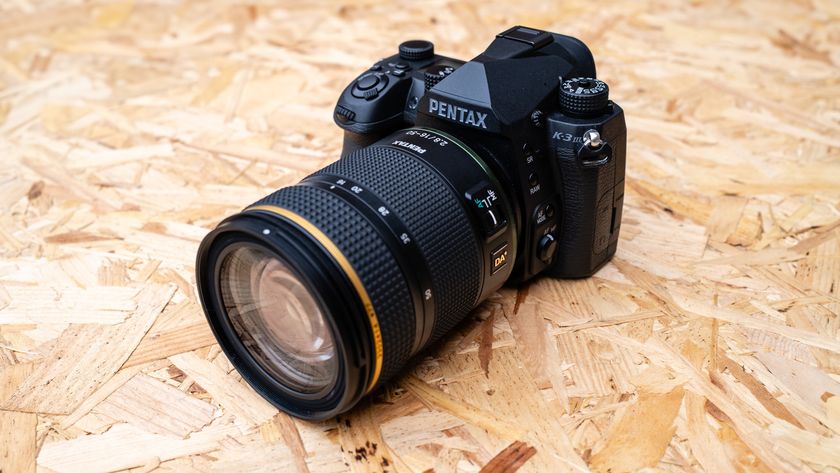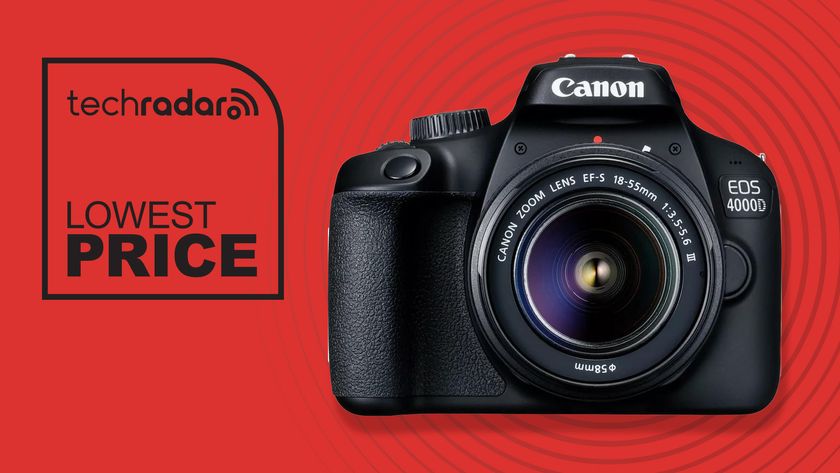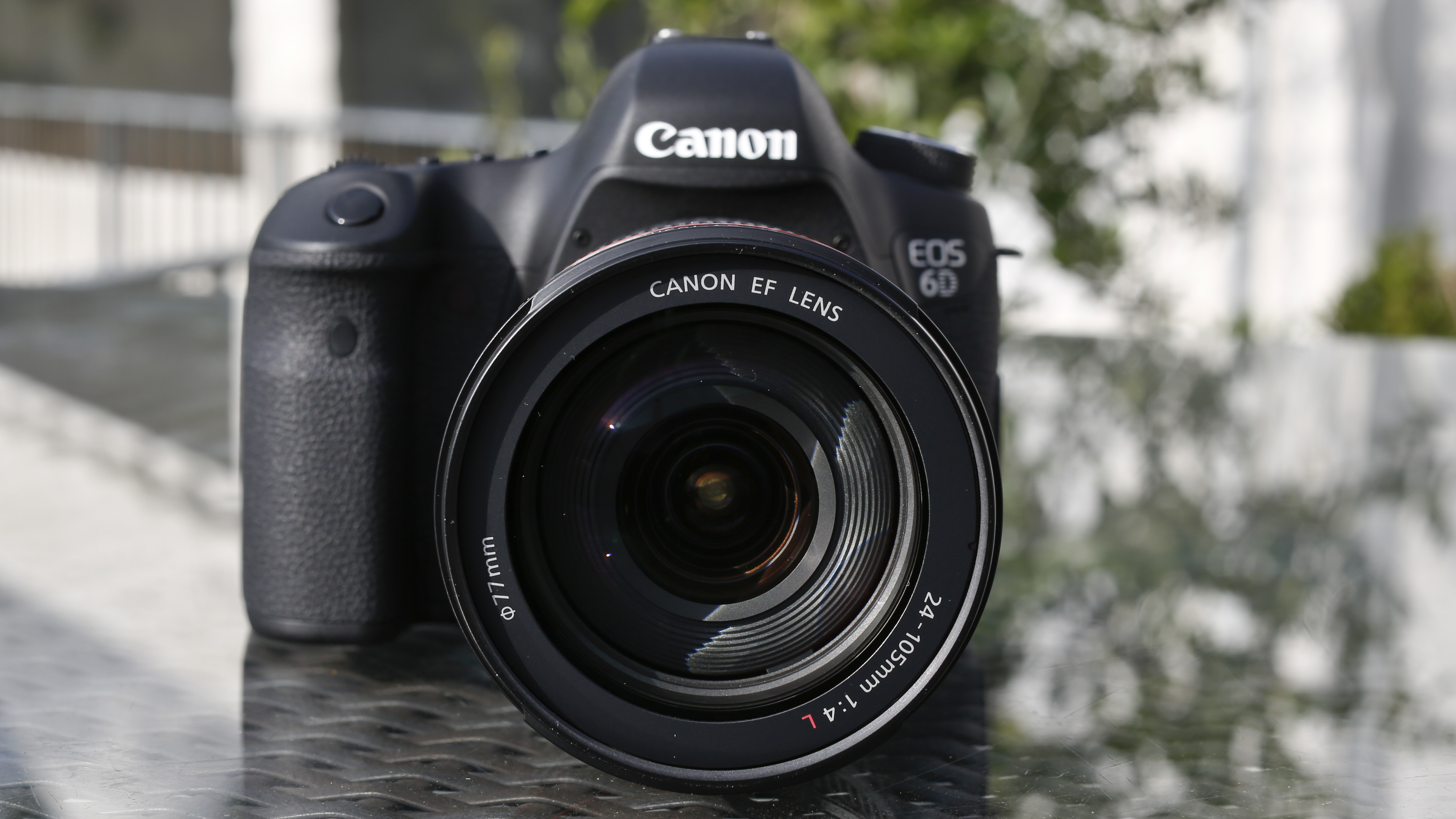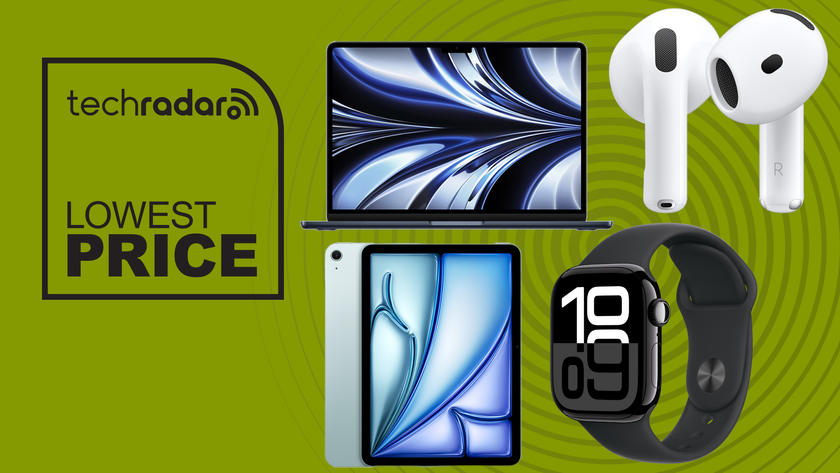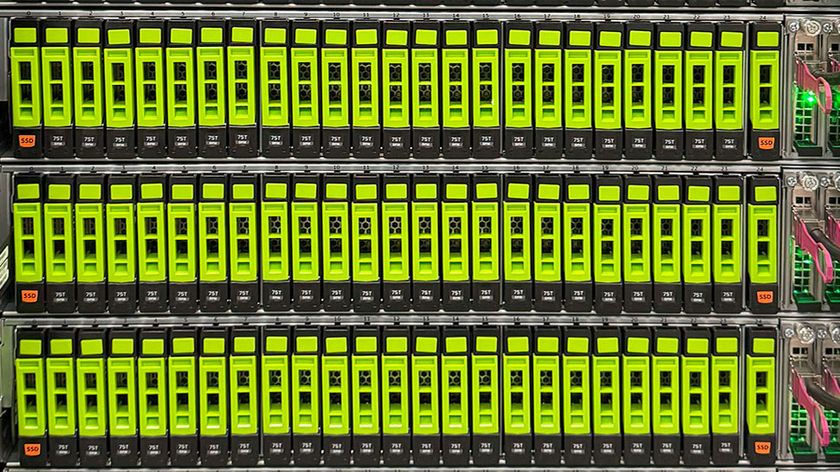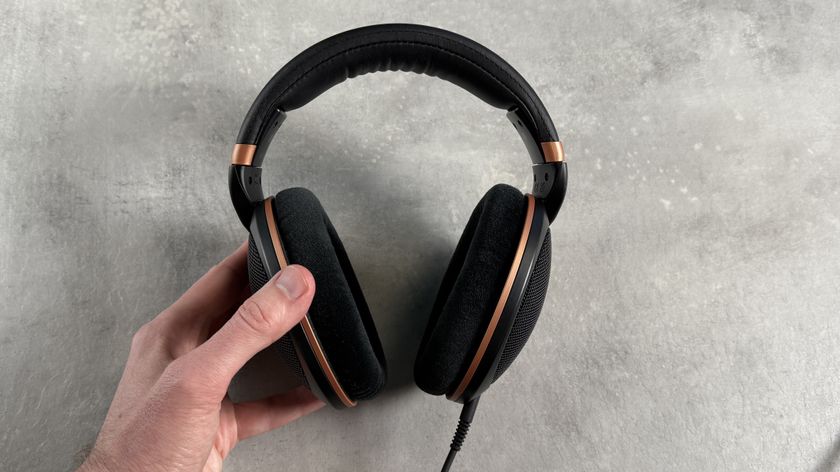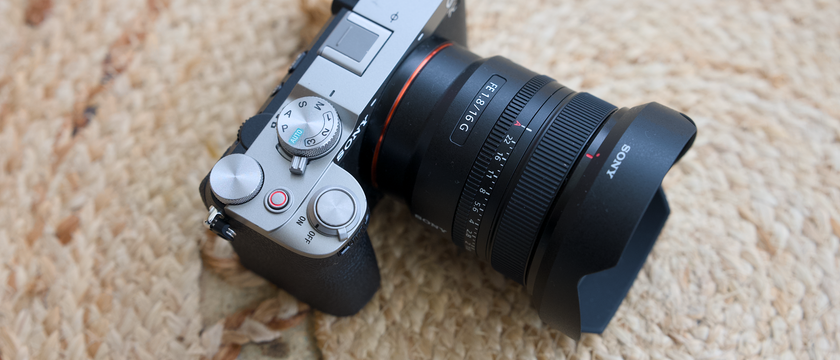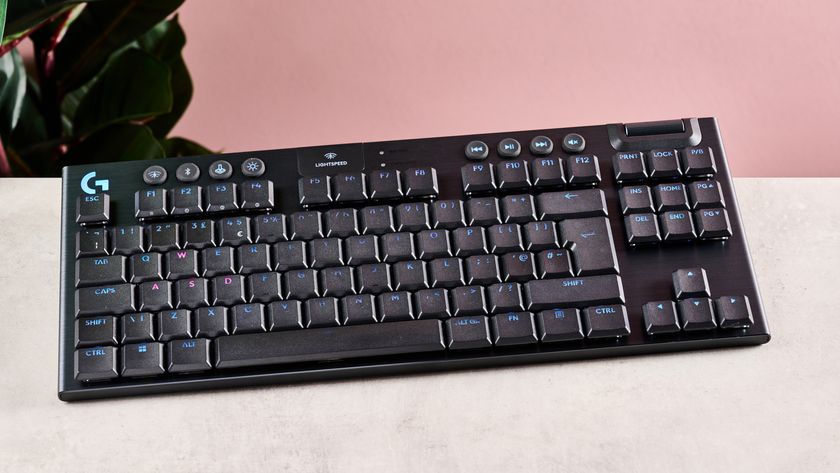TechRadar Verdict
All things considered, the Canon EOS 6D is an excellent choice for the enthusiast and club photographer looking for a full-frame DSLR. These users will find that they have just about everything they need, and a bit more besides.
Pros
- +
Enthusiast-centric controls
- +
Remote control via Wi-Fi
- +
GPS technology
- +
High image quality
Cons
- -
No flash
- -
Lacks some connections
- -
97% viewfinder coverage
- -
Limited viewfinder overlay
Why you can trust TechRadar
In many ways the Canon EOS 6D is the Canon's first true enthusiast level full-frame digital camera. While the Canon EOS 5D Mark III and Canon EOS 1DX also have a full frame sensor, the Canon EOS 6D's design and handling is far closer to that of the APS-C format Canon EOS 60D.
[Update: The EOS 6D is now over six years hold and has since been replaced by the much better EOS 6D Mark II. This has seen a boost in performance and an overhauled AF system, making it a much more advanced and up-to-date DSLR. The EOS 6D is old, and unless you can find a brilliant deal on one, we'd recommend you look elsewhere. Here's our pick of the best full-frame cameras.]
In a mix of numbers, the Canon 6D sits just below the Canon EOS 7D and above the Canon EOS 60D, despite the Canon 7D being considerably cheaper. But then the Canon EOS 7D was launched back in 2009, and although it has high-end features that are well tuned to wildlife and sports photographers, its price has fallen.
The smaller body size and weight, as well as the reduced feature set, confirm that the Canon 6D is for the enthusiast or travel photographer. These users want a high-quality camera, but they don't need the bomb-proof build quality of cameras higher up the Canon DSLR lineup.
Canon has included a couple of modern niceties with the 6D, including Wi-Fi and GPS technology built in for the first time in a DSLR.
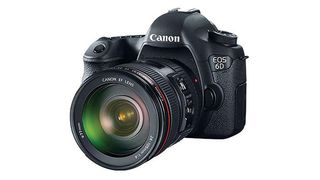
These are handy for recording your location and taking wireless control of your camera or uploading your images directly to your computer or Facebook and so on, without having to carry cables.
At the heart of the Canon 6D is a 20.2 million pixel full frame CMOS sensor. This combined with the Digic 5 processor enables a native sensitivity range of ISO 100-25600, which is great for low light and landscape work, but can be extended to ISO 50-102400 if necessary.
Priced at £1,799/AU$2,349/US$2,099 body only or £2,519.99/AU$3,498/US$2,899 with an EF 24-105mm f/4 L IS USM kit lens, the Canon EOS 6D is appreciably more affordable than the Nikon D600.
There are a total of 11 AF points, eight fewer than the Canon 7D, with only the central one being cross-type. This means the Canon 6D has two more AF points than the Canon 60D, but this lower-level camera's nine points are all cross-type.
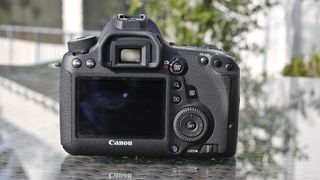
Migrating down from the Canon 5D Mark III are the various AF fine tune options, showing that the Canon EOS 6D is capable of some advanced AF control. These enable you to quickly adjust the tracking sensitivity and the acceleration and deceleration of tracking, which again are all useful when shooting moving subjects.
At 4.5fps, the Canon EOS 6D's maximum continuous shooting rate is also slower than the 5.3fps of the Canon 60D, which even given the Canon 60D's 2MP lower resolution seems a little odd, because it has a Digic 4 processor.
Another key difference between the Canon 6D and the Canon 60D, of course, is that the APS-C format camera has an articulating LCD screen. In other respects, however, the screens are the same, and both cameras have a 3-inch 1,040,000-dot device.
Wi-Fi technology is slowly appearing in compact cameras and CSCs, but the Canon 6D is the first DSLR to feature it built in.

While this may seem like a gimmick in many cases, or at worst just a half-hearted attempt, Canon's engineers have produced a simple, straightforward solution that's easy to set up and is beautifully executed.
Pairing the camera and a smartphone takes a couple of minutes via the Canon EOS Remote app, and shouldn't be beyond the reach of even the most tech-phobic photographer. Once paired, you can select the shooting mode you want and then adjust the settings on the screen of your phone.
Taking manual mode as the example, you have quick and instant access to aperture, shutter speed and sensitivity, which are all adjustable with a touch of the relevant option.
As default, the focus button is hidden, but once it's switched on through the settings menu, the app suddenly becomes the wireless solution we've been waiting for.
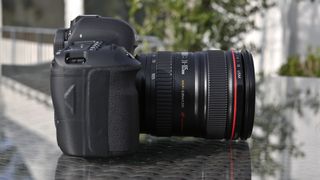
In use this Wi-Fi app works seamlessly, enabling you to quickly select your focus point, touch to focus, double-tap to zoom in on the image preview and check, and tap the shutter release to shoot. Once taken, the image appears on screen.
As with solutions from Nikon, Panasonic and Olympus, images can be downloaded from the card to the device ready to view.
At present the only company to take the Wi-Fi solution a step further is Panasonic, with the GH3 and the ability to zoom wirelessly with its power zoom lenses.
The Wi-Fi feature isn't just isolated to camera control through a smartphone, though, since there are further options in-camera that can connect to other wireless networks. These options include uploading your images, transfering files between camera bodies or computers or to your printer and even a Wi-Fi-enabled TV.
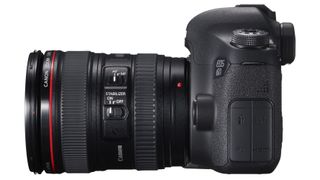
The addition of GPS should appeal to travel photographers, but is one of those features that can only be fully appreciated once used. Being able to accurately locate where you've shot your pictures is handy, especially if there are locations you visited and mean to return to.
As with Wi-Fi, setup is quick - just switch it on in the menu system, adjust the settings as needed and it's ready to go, once a satellite has been located, of course.
Then go about shooting as normal, and once back at your computer the GPS data is automatically tagged to the image information. This can be recalled and viewed either through Canon's software or any application that can read EXIF information.
Both Wi-Fi and GPS, once switched on, are highlighted on the LCD screen.
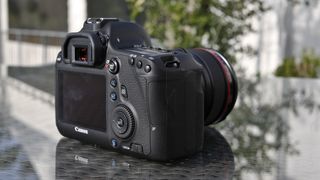
There are several omissions from the Canon EOS 6D that we might reasonably expect to see on a camera of this level, but times are changing and so is the way we use a DSLR, so some of these absences start to make sense.
Unlike the Canon EOS 7D, there's no PC socket (the port for connecting a studio flash) or pop-up flash. However, there is a flash hotshoe. This shouldn't be an issue for many enthusiasts, however, because they tend to use flashguns.
If you do want to use the camera with a studio setup, then many budget sets including some from Ellinchrom, Lencarta and Bowens now feature their own trigger wireless systems.
Next is the single SD card slot. With rivals such as the Nikon D600 featuring two SD card slots and the Canon EOS 5D Mark III having SD and CF ports, you'd expect to see two card slots in this body.
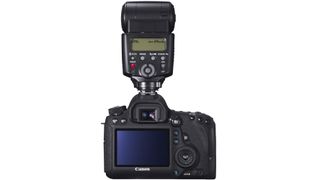
But keeping body size and weight to a minimum was important for the Canon EOS 6D's designers. Add to this the low price and high capacity of SD cards today, and two slots becomes less essential to enthusiast photographers.
Full HD video capture is of course possible, but as with both the Canon EOS 7D and Canon EOS 60D there's no headphone socket for you to monitor the sound while recording. There is a visual guide to audio levels, along with Manual control over them, however.
Hitting the info button in movie live view switches between the different overlay and info screens, one of which includes a visual audio level, which enables you to monitor the sound levels visually when recording.
So while the Canon EOS 6D has the ability to shoot high quality video footage, an external audio recorder such as the Tascam DR-40 is still worth considering.
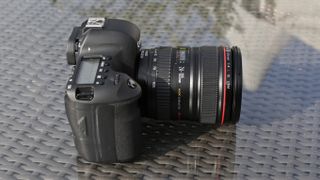
Touch and articulated screens have become big news. So while the EOS 60D has a very handy articulated screen and the EOS 650D has a touchscreen, the EOS 6D feels a little bit of a letdown, with a fixed high resolution Clear View TFT 3-inch screen with approximately 1040k dots.
Although the screen has no new frills, it displays menus and images clearly. In bright sunlight the amount of reflection is kept to a minimum, and most importantly the colour and tone of images on the screen closely relates to those you see on screen back in the digital darkroom.
Ali Jennings is the imaging lab manager for Future Publishing's Photography portfolio. Using Imatest Master and DxO Analyser he produces the image quality tests for all new cameras and lenses review in TechRadar's cameras channel. Ali has been shooting digital since the early nineties and joined Future's Photography portfolio back in 2003.
